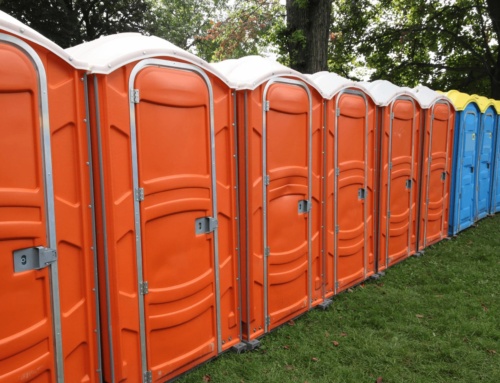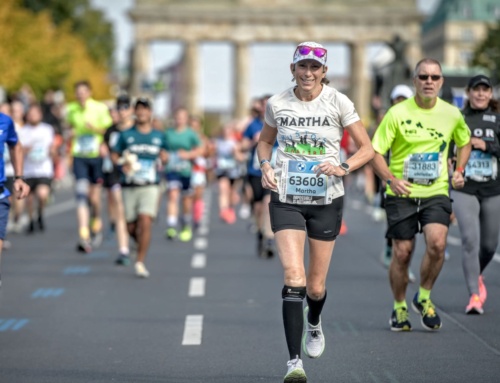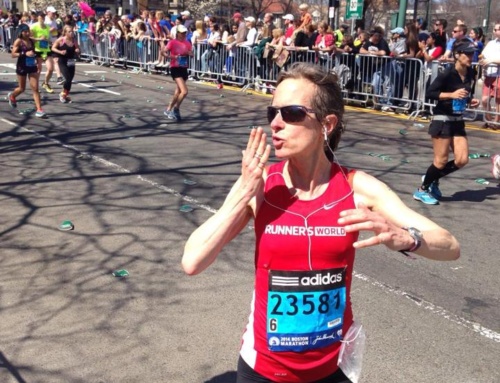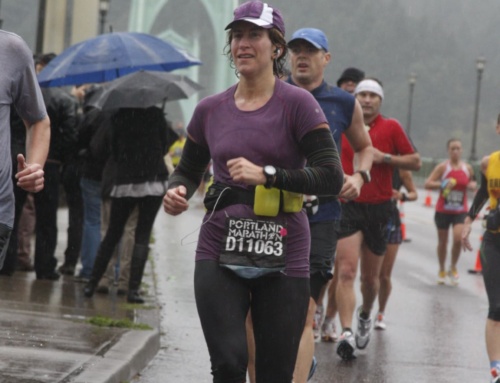
Note: This is our third in our 2018 Goals Series. Missed the two posts? Grab them.
When I—Tish—first started working at Runner’s World a long time ago, I ran marathons right around 4:10.
(Once upon a time, I clocked marathons in the 3:45 range, but that was many years and about 15 pounds ago.)
A running frenemy told me that there was no way I would ever break four hours in the marathon again, so I might as well have another slice of chocolate cake.
At RW, there was this guy who worked down the hall, super friendly, super encouraging, known as the mayor of running, Bart Yasso.
I cornered him one day: “BART YASSO! DO YOU THINK I CAN BREAK 4 HOURS?”
Bart, looking startled, asked me my current time. When I told him, I fully expected him to say, in his super friendly, super encouraging, gravelly voiced Bart-like way something like, “Oh, sure! No problem! Piece of (chocolate) cake!”
Instead, Bart said: “Hmpf. It’s gonna be hard.”
NICOLE HAS BOSTON ON THE BRAIN
This memory came to mind when I talked to Nicole Albright, who’s got Boston on her mind. It’s her number 1 Athletic Priority for 2018. She’s 37, so that means she has to run 3:40 or better.**
(*She’ll actually need to run closer to 3:36 if she wants to secure a spot in the prestigious marathon thanks to its complicated fastest-in-first policy and sell-out registration process.)
Nicole finished her first marathon in 4:17 five years ago, and she’s been steadily chipping away at her time. She ran an impressive 3:45 at the Indianapolis marathon in November. That’s more than 30 minutes off in five years. Woohoo!
So for Nicole to run a Boston qualifying time should be a piece of cake, right?
You see where I’m going with this. Hmpf.
HOW HARD IS IT TO TAKE 10 MINUTES OFF YOUR MARATHON TIME?

In your first years of running, if your priority is to get faster and you put your mind and energy to it, you’re probably going to get faster. Which is satisfying and fun. Who doesn’t like to see faster times?
But the big drops in time get smaller as you reach your personal limits—of fitness and desire. And eventually age catches up with you.
Nicole isn’t there yet, of course. She’s run 8 marathons and she’s only 37! We all know people who’ve set personal records at age 42, 47, 55.
But Nicole also has a 6-year-old son and a full time job—she’s a music teacher—which means she gets her runs in before being mom and boss, which means she’s on the road at 4:30 a.m.
“I do what Dimity says: Don’t think, just go,” Nicole says.
And only in this crowd can Nicole say something like, “I can’t do long runs during the week, because while I don’t mind getting up at 4:00, I just can’t see a 3 on my alarm clock.”
HOW CAN NICOLE ACHIEVE HER GOALS +
QUALIFY FOR BOSTON?
With great support + a BRF. Nicole has a younger sister, who has two sons, to do long runs with. And they have super-supportive husbands, who make a fun weekend with the boys when she and her sister travel solo (yay! sorry kids) to their marathons.
With smart nuturition. by eating less sugar and thinking of food as fuel. “I’ve been using Shalane Flanagan’s cookbook,” she says.
Sidenote: Nicole has been a vegetarian all her life. While a lighter weight does make a runner faster up to a point, she also has to be careful to keep her protein intake high, not to get TOO skinny or she’ll zap her energy.
With smart racing. Nicole is aiming to run negative splits in back to back half-marathon and marathon (March and April), which means running the second half of the race faster than the first.
Whoa, you say. Isn’t that a lot, maybe even too much?
Nicole has done a half-marathon before nearly every marathon with no adverse side effects. And she plans to do both of these at a really conservative pace. As long as she can lock into that really conservative pace, and not get carried away with the excitement of the day, she’ll be fine.
That said, she admits that she has NEVER run a negative split, which is an important skill for racing.
HOW DO YOU RUN A NEGATIVE SPLIT?
Start out slow. I mean, you should feel like you’re just doing a warmup jog. (I said the J word!)
HOW SLOW DO YOU HAVE TO GO?
For those of you who need numbers my former colleague (Budd Coates, a five-time Olympic Marathon Trials qualifier) offers this formula: use the pace of the last half of your longest long run.
PS This is the best way to start any marathon, the best way to finish strong, the best chance you have at getting that BQ.
With smart goals. As for Nicole setting PRs in both the half and full marathon in September and October, I admire her ambition. I would also caution not to get too tied to both of those outcomes as the only measure of success. The half-marathon should be a tune-up for the full, not a blow-up.
POSTSCRIPT #1
As it happens, I did break four hours in the marathon again, and it WAS hard. I followed a plan Bart Yasso graciously sent me (and two other RW co-workers) via email week by week, and ran 3:54 at the Country Music Marathon. Yay! A version of that plan is in his new book, Race Everything.
POSTSCRIPT #2
Sarah Bowen Shea and I chatted with Bart for the January 26 Another Mother Runner podcast—up this Friday. Tune in and let us know what you think!








Nicole is me eight years ago! I believe she can do it!! Go Nicole!
Yes- she can!!! I know it. I was 38 last year and qualified after 3 years of trying (4:11, 3:53, 3:46, 3:38 and finally 3:36!!!) Just keep chip, chip,chipping away. I work full time with 2 kids. Lots of early morning and pushing thru. But it will be worth it!
I totally think she can do it! The marathon is like an onion and you get to know it one layer at a time. Plus, with a 6 year old son, she’s just getting to a relatively easier phase of mothering. And the lack of prior negative splitting at the half distance tells me she has stuff to learn about pacing – stuff that is completely learn-able and will really help with that BQ goal. That’s a goal I share, so fingers crossed we both get there this year!
Go, Nicole!! You can totally do this. Reading about you reminds me a ton of myself. I am also a teacher, and I have a son (he’s 7). When I train, it’s before the sun — and my son and husband — rises. I will get up at 4, but cringe and setting an alarm for 3-anything. My first marathons were in the mid-2000s, the first 3 in around 4:15. Then I broke the 4-hour barrier with 3:55s on marathons #4 and 5. Seven years (and one pregnancy/birth) later, I finally BQ’d with a 3:39! I did it in 2016, and again (12 seconds faster) in 2017. Luckily, I’m already 42, so the 6-minute buffer meant I did get in to Boston for 2018. I worked hard, and made it happen. And all this is to say that I am confident you can make it happen, too! I do hope AMR will keep us posted on your progress!!
Thank you so much for the kind words, Ladies! I’m feeling totally pumped about this goal! I know especially with the help of an AMR training plan and all of the BAMRs in the tribe, I can do it!
You can do it, Nicole! May the miles ahead be good to you. It tooks us a lot of persistence and patience to finally catch the unicorn.
Great goals! I went from a 4:15 marathon to a 3:29 marathon on #6 after two kids when I was in my early/mid thirties to finally get to Boston last year. I would agree with Tish that if a BQ is the goal, lay off on that half a month earlier and really aim for the big day.